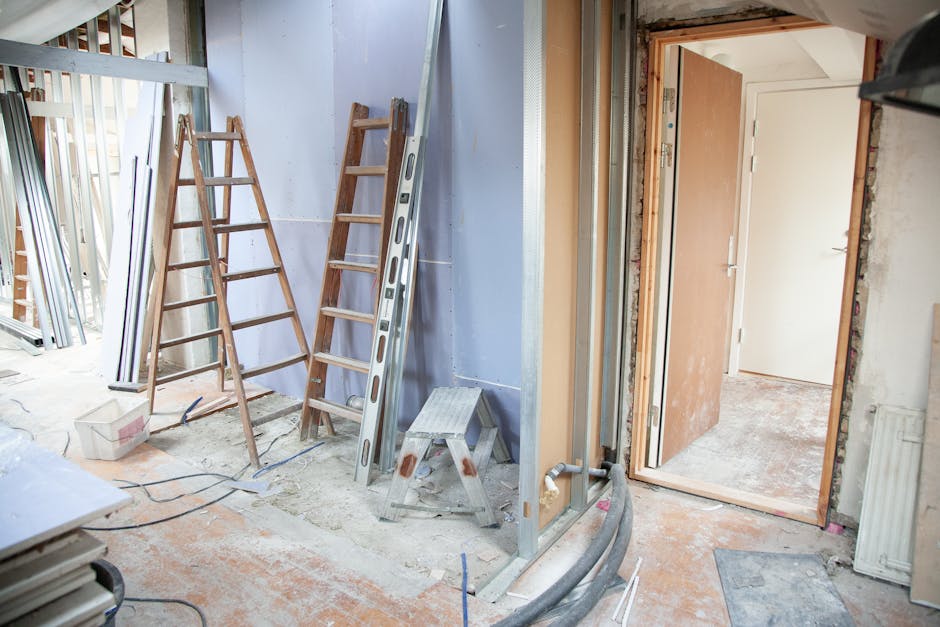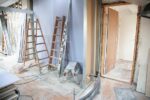How to renovate when your walls hide decades of bad repairs
The truth about home remodeling, particularly when tackling older houses, is that what you see on the surface is rarely the full story. Behind seemingly smooth plaster walls and freshly painted drywall often lies a history of questionable decisions, hasty fixes, and perhaps well-intentioned but ultimately disastrous DIY projects. You know, the kind of stuff that haunts the dreams of seasoned contractors. Homeowners should proceed with caution.
Unveiling the Layers: A Historical Dig
Before swinging that sledgehammer or even picking up a screwdriver, understand you are about to potentially disturb a sleeping giant. A giant made of lead paint, asbestos insulation, and wiring that would make Thomas Edison raise an eyebrow. That old wallpaper? Probably hiding cracks. The paint job? Concealing water damage. The seemingly solid wall? Possibly held together by nothing more than hope and outdated construction adhesive. This is the real challenge: figuring out what horrors lurk before you’re knee-deep in them. An amateur might not consider all the potential pitfalls, but it's crucial.
The Perils of Previous Patchwork
Think about it. Every homeowner before you had their own idea of "fixing" things. Maybe they ran new electrical wire… poorly. Perhaps they attempted to level a sagging floor with… shims of varying thicknesses. It's a testament to ingenuity, sure, but also a potential nightmare for anyone coming along later trying to implement a modern home design. And let's not even get started on the plumbing. Copper pipes inexplicably connected to galvanized steel? P-traps that are more like S-traps? It's a plumbing museum, but not in a good way.
Decoding the Evidence: Reading the Wall’s Story
Walls, in a sense, are silent historians. They hold clues to the past. Uneven surfaces may indicate shifted foundations or past water damage. Different textures in the plaster can point to various repair attempts. Examining these tells can provide insight into the types of problems you're likely to encounter. Probing a little further (carefully!) can reveal the extent of the issues. And don't forget to use your nose. Musty odors are red flags for mold, which often grows undetected behind walls, thriving on old leaks and poor ventilation.
Budgeting for the Unknown: A Contingency is Your Friend
Every renovation project needs a budget, but when you're dealing with potentially hidden problems, that budget needs a significant buffer. It's not a matter of if you'll find something unexpected, but when. Allocating at least 15-20% of your budget to a contingency fund is not being pessimistic; it's being realistic. This fund will be your lifeline when you uncover that the entire wall cavity is infested with termites or that the wiring is so brittle it crumbles at the slightest touch. You'll sleep better at night knowing your budget can absorb some unfortunate surprises.
- Professional structural Engineers provide an invaluable service, offering insights and designing solutions that address complex structural issues that previous homeowner repairs would have had trouble with.
- When facing these challenges, the skills of experienced Contractors become essential to ensuring a successful renovation outcome, especially when you add vintage building materials.
- Also, consider lead paint abatement and asbestos removal.
Navigating the Regulatory Labyrinth: Permits and Codes
Before you start tearing things down, make sure you're up to speed on local building codes and permit requirements. Many seemingly minor renovations require permits, especially those involving electrical, plumbing, or structural changes. Ignoring these regulations can result in hefty fines and delays, not to mention potential safety hazards. Nobody wants to redo work because it wasn't up to code. Ensure your contractor is familiar with the local regulations and obtains the necessary permits before starting any work. Not getting permits from local authorities leads to a lot of delays.
The DIY Dilemma: When to Call in the Pros
While the allure of DIY can be strong, especially to save money, there are times when it's simply not worth the risk. Tackling electrical or plumbing work without the proper knowledge and experience can be dangerous and illegal. Structural repairs should always be left to professionals. Know your limits and be honest about your skillset. A botched DIY job can end up costing you more in the long run than hiring a professional in the first place. Plus, there's the added peace of mind knowing the job is done right and up to code. It can even effect the resale value.
Living Through the Chaos: Strategies for Survival
Renovating a house, especially one with hidden problems, is disruptive. Dust, noise, and general disarray become the norm. Creating a "safe zone" – a room or area where you can retreat from the chaos – can be essential for your sanity. Invest in good dust barriers to minimize the spread of debris. Communicate regularly with your contractor to stay informed about the progress and any unexpected delays. Most importantly, remember that it's temporary. There is light at the end of the tunnel, even if it feels like a long and arduous journey.
Embrace the Unexpected: The Silver Linings
While uncovering layers of bad repairs can be frustrating, try to embrace the unexpected. Every problem solved is a learning experience. You'll gain a deeper understanding of your house and its history. You might even uncover some hidden gems along the way – original hardwood floors beneath layers of linoleum, antique fixtures hidden behind modern upgrades, or even forgotten treasures tucked away in the walls. Renovation projects can become a rewarding experience.
The Long Game: Investing in Your Home’s Future
Ultimately, renovating a house with a history of bad repairs is an investment in its future. By addressing these underlying issues, you're not only improving the aesthetics and functionality of your home, but also its structural integrity and long-term value. It's an opportunity to correct past mistakes and create a safer, more comfortable, and more sustainable living space for yourself and future generations. Plus, it can increase the home equity. Don't rush the process. Do your research, hire qualified professionals, and be prepared for the unexpected. The rewards will be well worth the effort.
Asbestos is very prevalent in the walls, tiles and popcorn ceiling of older homes. Lead Paint often coats the walls of many older properties.






